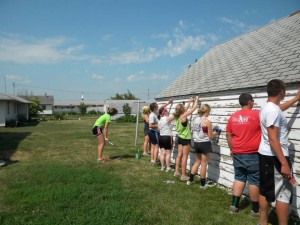by Tim Ryan
Director of Junior High Ministries
West Shore Evangelical Free Church
The following is an excerpt from our Winter 2016 Magazine. To view the whole magazine, click here.
I was blessed with the opportunity to take a group of senior high student mentors and special needs students to the Fruitland Special Needs Serve in July. As a youth pastor, I’ve had many opportunities to take students on mission trips, but I’ve never experienced anything quite like a Special Needs Serve!
First, we experienced the embrace of the entire church family. I was personally blown away by the commitment to the success of the week by a large portion of the church body. They had thought of every little detail and were so sensitive to the needs of the visiting team members throughout the week. As I talked with one of the host church volunteers, I discovered that he and his wife had taken the entire week off from work so they and their two girls could serve our team through transportation, meal preparation, small group lessons and more!
As the week progressed, it became apparent that many others in that small church had made tremendous sacrifices to make it all happen. Everyone on our team felt cared for—as if we were visiting family for the entire week! This was evident when Adam, one of my students, was referring to the hosts as brother, sister, mom and dad!
The host team also did a phenomenal job finding worksites that were very meaningful; yet adaptable to special needs team members. It was a joy to watch special needs students and their student peer mentors working side-by-side helping ministries do the work of Jesus’ hands and feet. In some cases, that meant sorting and prepping eyeglasses and hygiene supplies for shipment around the world. In other cases, it meant preparing fresh produce and packaged foods for distribution in the community. In every case, we were blessed to learn more about the agencies we worked with and the impact they make for God’s Kingdom.
On our last night, our site leader asked the peer mentors to finish the statement, “I used to think ______, but now I know _______” (regarding students with special needs). The answers that my students gave to that one question alone spoke volumes to just how deeply God used the week of Serve to stretch and grow their faith. One student related how previously she thought that students with special needs couldn’t really fully understand God or worship him in a deep or meaningful way. Now, as a result of her special needs Serve experience, she knows that students with special needs are blessed by God to connect with him directly without many of the self-conscious barriers that she came to recognize in her own relationship with God.
Toward the end of the long van ride home, I asked the students about next year. Every single one expressed a desire to do it again if they have the opportunity!



